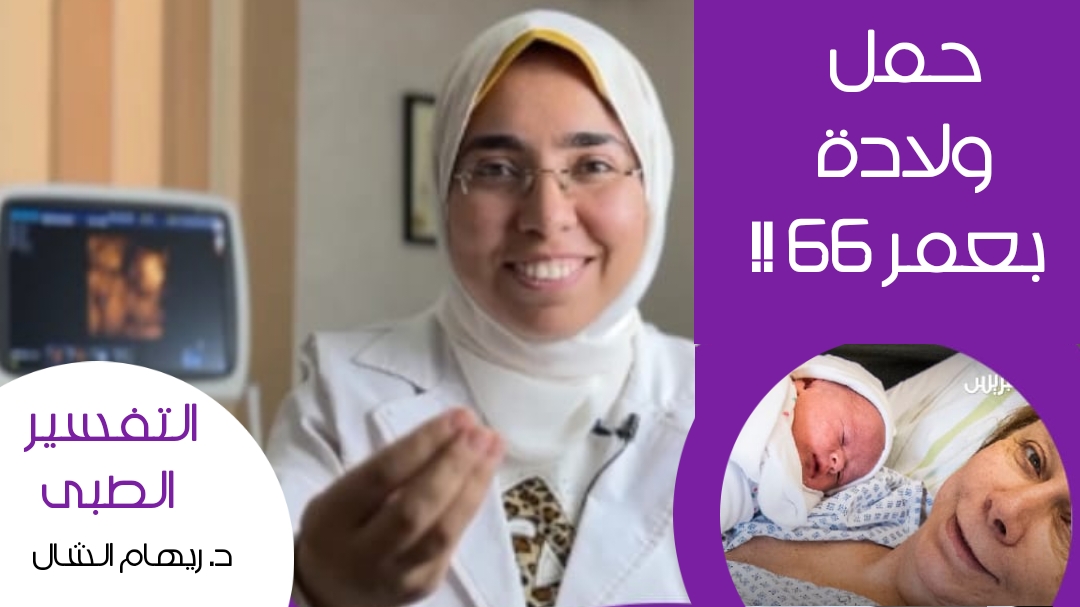How Did a 66-Year-Old German Woman Get Pregnant? The Story That Shocked the World!
Some time ago, a very strange story went viral on social media and international news outlets: a 66-year-old German woman gave birth to her tenth child! Everyone was shocked, and questions started pouring in: How? Is it really possible for a woman at that age to get pregnant naturally? Isn’t menopause supposed to begin by 50 or 55 at the latest? And what about her menstrual cycle? Could it still be active at that age?
The question reached the doctor, and she said that the topic isn’t surprising in “Tabibaty” clinics, because 30% of her followers sent messages asking about the same case. The news was truly shocking—not just to regular people, but even doctors around the world were stunned.
The strange part is that the woman’s doctors claimed the pregnancy happened “naturally”! That means without major complications or medical interventions, as many would expect. The woman herself said it was a natural pregnancy. But the doctor explained that she takes the woman’s statement “with a grain of salt,” because in many cases, women undergo IVF or artificial insemination but choose not to disclose it. And that’s something we should respect.
To watch the full video, click here:
The doctor also emphasized an important point: Does it matter if the pregnancy is natural or medically assisted? Of course not. What matters is that there are indeed documented cases of IVF pregnancies over the age of sixty! She mentioned that in 2023, a woman gave birth to twins at 73 years old!
So, does pregnancy affect a woman’s egg reserve? On the contrary, pregnancy actually delays the depletion of egg reserves. During the nine months of pregnancy, ovulation comes to a complete halt, which helps preserve the ovarian reserve. And if you add two years of breastfeeding, that’s additional time without ovulation. We’re talking about approximately two years and nine months with no consumption of ovarian reserve!
This could explain how the German woman, after giving birth to nine children, was able to conceive a tenth child at the age of 66. Her body might have preserved her ovarian reserve over the years. Especially if she breastfed naturally after each child, that would significantly reduce the consumption of her reserve.
Some people speculated that this woman had polycystic ovary syndrome (PCOS), which might have helped her maintain her egg supply, since PCOS often leads to irregular ovulation. But the doctor expressed her reservations about that explanation—because it’s not logical for someone with PCOS to get pregnant ten times! That said, she acknowledged that women with PCOS can indeed have high ovarian reserves, but that doesn’t mean the reserve will stay high forever.
Another important point: Some women, after being told they have PCOS and high ovarian reserve, feel reassured and delay pregnancy—and that’s dangerous! Because the reserve can suddenly decrease without warning. The situation can shift from “PCOS and high reserve” to “low ovarian reserve,” which is deeply upsetting.
The doctor suggested that the most likely explanation is that this woman lived a healthy lifestyle, which helped maintain her strong ovarian reserve. In fact, diet and lifestyle have a huge impact on reproductive health.
In the end, the doctor circled back to a very important message: Whether a pregnancy is natural or medically assisted does not diminish the value of motherhood or fatherhood. The goal is to achieve the dream of parenthood, whether naturally or with medical help.
And with a beautiful message, the doctor concluded her talk with this advice:
Don’t waste time. Don’t delay pregnancy decisions. Live a healthy life. Because opportunities can disappear in a moment.
She also invited her viewers to share their opinions:
Which explanation do you believe about the German woman’s case?
• The first one: that she preserved her egg reserve through pregnancy and breastfeeding?
• Or the second one: that she had PCOS?
To follow all articles related to infertility and the dream of motherhood, click here:

